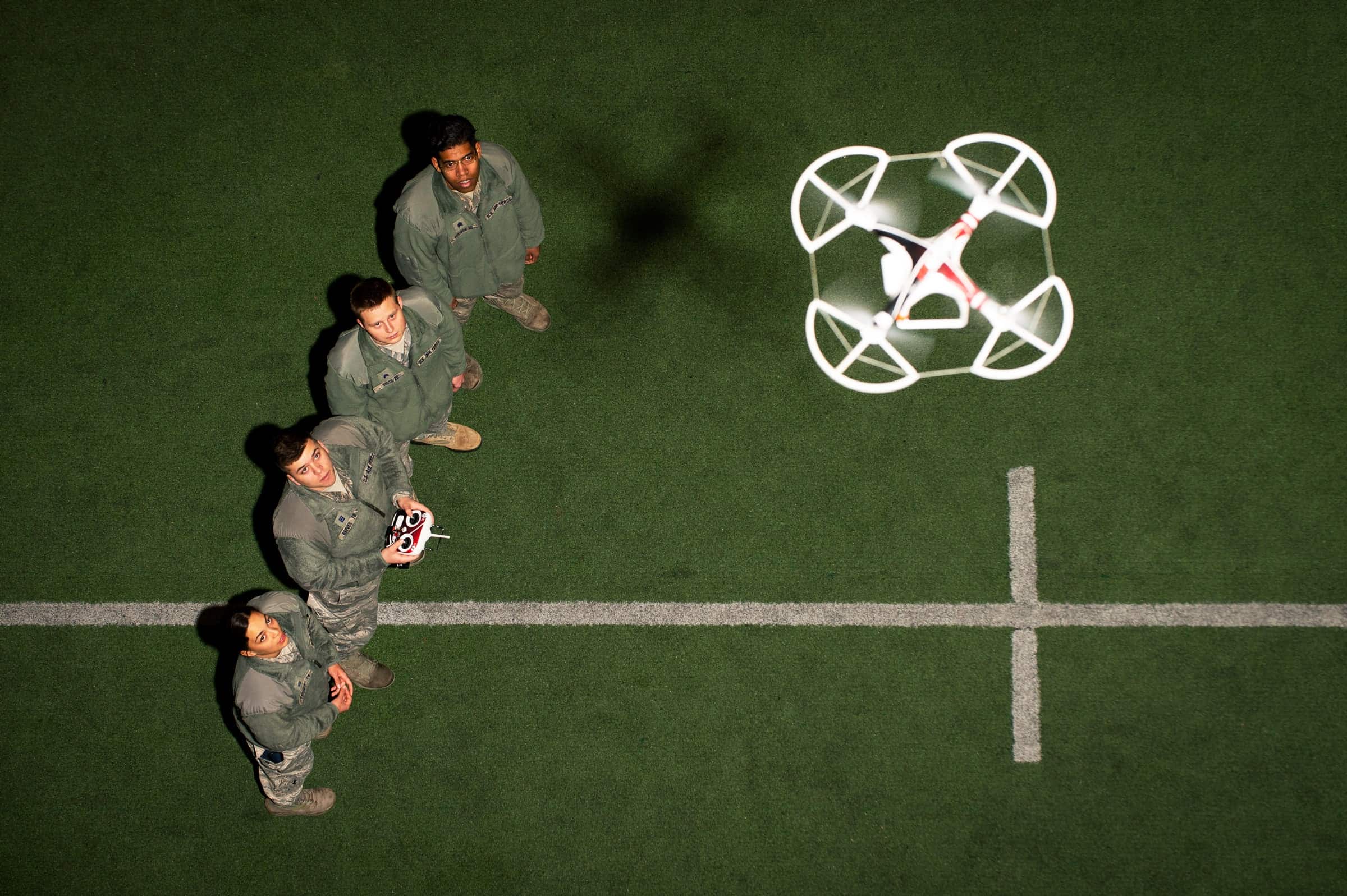FOR COUNTLESS AMERICANS, the United States military epitomizes nonpareil technological advantage. Thankfully, in many cases, we live up to it.
But our present digital reality is quite different, even sobering. Fighting terrorists for nearly 20 years after 9/11, we remained a flip-phone military in what is now a smartphone world. Infrastructure to support a robust digital force remains painfully absent. Consequently, service members lead personal lives digitally connected to almost everything and military lives connected to almost nothing. Imagine having some of the world’s best hardware—stealth fighters or space planes—supported by the world’s worst data plan.
Meanwhile, the accelerating global information age remains dizzying. The year 2020 is on track to produce 59 zetabytes of data. That’s a one with 21 zeroes after it—over 50 times the number of stars in the observable universe. On average, every person online contributes 1.7 megabytes of content per second, and counting. Taglines like “Data is the new oil” emphasize the economic import, but not its full potential. “Data is” more reverently captures its ever evolving, artificially intelligent future.
The rise of artificial intelligence has come a long way since 1945, when visionary mathematician Alan Turing hypothesized that machines would one day perform intelligent functions, like playing chess. Aided by meteoric advances in data processing—a million-billion-fold over the past 70 years—Turing’s vision was achieved only 52 years later, when IBM’s Deep Blue defeated the reigning world chess champion, Garry Kasparov, with select moves described as “almost human.” But this impressive feat would be dwarfed in 2016 when Google’s AlphaGo shocked the world with a beyond-human, even beautiful move on its way to defeating 18-time world Go champion Lee Sedol. That now famous move 37 of game two was the death knell of human preeminence in strategy games. Machines now teach the world’s elite how to play.
China took more notice of this than usual. We’ve become frustratingly accustomed to them copying or stealing US military secrets—two decades of post-9/11 operations provides a lot of time to watch and learn. But China’s ambitions far outstrip merely copying or surpassing our military. AlphaGo’s victory was a Sputnik moment for the Chinese Communist Party, triggering its own NASA-like response: a national Mega-Project in AI. Though there is no moon in this digital “space race,” its giant leap may be the next industrial revolution. The synergy of 5G and cloud-to-edge AI could radically evolve the internet of things, enabling ubiquitous AI and all the economic and military advantages it could bestow. It’s not just our military that needs digital urgency: Our nation must wake up fast. The only thing worse than fearing AI itself is fearing not having it.
There is a gleam of hope. The Air Force and Space Force had their own “move 37” moment last month during the first AI-enabled shoot-down of a cruise missile at blistering machine speeds. Though happening in a literal flash, this watershed event was seven years in the making, integrating technologies as diverse as hypervelocity guns, fighters, computing clouds, virtual reality, 4G LTE and 5G, and even Project Maven—the Pentagon’s first AI initiative. In the blink of a digital eye, we birthed an internet of military things.
Working at unprecedented speeds (at least for the Pentagon), the Air Force and Space Force are expanding this “IoT.mil” across the military—and not a moment too soon. With AI surpassing human performance in more than just chess and Go, traditional roles in warfare are not far behind. “Whose AI will overtake them?” is an operative question in the digital space race. Another is how our military finally got off the launch pad.
More than seven years ago, I spearheaded the development of hypervelocity guns to defeat missile attacks with low-cost, rapid-fire projectiles. I also launched Project Maven to pursue machine-speed targeting of potential threats. But with no defense “plug-n-play” infrastructure, these systems remained stuck in airplane mode. The Air Force and Space Force later offered me the much-needed chance to create that digital infrastructure—cloud, software platforms, enterprise data, even coding skills—from the ground up. We had to become a good software “company” to become a software-enabled force.
Though not yet on AI’s newsreels, connecting 40 different military platforms, from satellites to ships to howitzers, with commercial technologies like cloud and AI—all to shoot down cruise missiles in split seconds—is a harbinger of things to come.
Though we’ve finally birthed this movement, we’re struggling to find the right name for it. “Advanced Battle Management System” seems uninspired and clunky. “Skynet” would likely raise eyebrows, but it would embrace what Terminator movies have entertainingly tried to teach us: Superior AI is not something we want to face on future battlefields.
Are there disproportionate safety and ethics challenges ahead for the US? Yes. And ours will be the higher road. But there’s no going back from a move 37 moment—neither ours nor China’s. The US must work more urgently—both nationally and militarily—to harness AI safely and effectively. But as the digital space race plays out, it’s about time our military took back the wow factor from video games and sci-fi movies.

